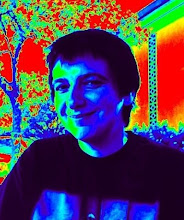The voyage of Planck

I flew down to Florida last night, and I am missing the big party my Caltech-JPL colleagues are having since 3 am this morning to accompany the launch of Herschel-Planck: I am watching it live on the ESA webpage, but I'll miss out on all the fun back in California.
There are big expectations for the Planck mission among cosmologists: it is the third and last of a series of satellites whose data revolutionized the field in the past decade. The first was COBE, NASA's Cosmic Bakground Explorer, launched in 1989. In that year the eyes of the world (and mine) were on other events, but it soon became clear that cosmology was entering a new phase when the significance of the microwave background radiation data of four years of COBE observations began to be unraveled. The images of fluctuations of the cosmic microwave background entered our collective consciousness.

The launch in June 2001 of the WMAP satellite, the NASA Wilkinson Microwave Anisotropy Probe, produced a map of the microwave background in much finer resolution. The age of the universe, the riddles of dark matter and dark energy, the age of reionization from the polarization spectrum of the CMB, the amplitude of fluctuations and the problem of structure formation: all that came to characterize the main challenges and successes of modern cosmology came from the refined view of the microwave background provided by these satellites.

And Planck? ESA stepped in for this third installment, which just successfully lauched from the Kourou spaceport in the French Guiana. Data will start to come in soon! An improved view of the polarization spectrum of the CMB, a higher resolution in spherical harmonics for the temperature spectrum are among the major improvements expected over WMAP: the new data will test models of inflationary cosmology. The latter in turn depend (for the shape of the potential of the scalar field that runs the inflation) on particle physics models, so the cosmological data will in part also be read as data about particle physics models. Theoretical cosmologists have been exploring a range of possible deviations from the usual Einstein-Hilbert action of general relativity, ranging from conformal gravity, non-minimal couplings with other fields (such as the Higgs field), modified gravity, all waiting to be confronted with the cosmological data, in search of a match that would shed light on the darkness of energy and matter.
ESA broadcast
Planck homepage
JPL
Caltech PMA division

